Géza Szilvay recently turned 80 and began to develop his world-famous Colourstrings method more than 50 years ago. Anna Grundström discovers the sources of his inspiration
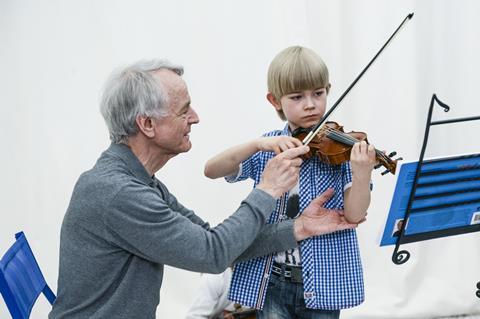
Discover more Featured Stories like this in The Strad Playing Hub.
It is a story retold in numerous articles unpacking the marvel of Finnish string instrument tuition: how the exceptional charisma of cellist Erkki Rautio at the Casals Competition attracted the interest of the Szilvay brothers from Hungary who were then invited by their new friend to visit Finland. Soon, violinist Géza Szilvay accepted an invitation to teach at the Music University in Helsinki for one year and to bring his family with him. The description of a ‘university’ with campuses from Kontula to Roihuvuori turned out to be an error in translation, and instead of professional students Szilvay found himself teaching dozens of school children in eastern Helsinki.
Around the same time, his eldest child had proven to respond animatedly to the sound of the violin even before birth, and so the need for a child-oriented violin pedagogy emerged. The time available per student for one-on-one tuition was limited, however, and out of this dilemma came the invention of group tuition. From his compatriot Zoltán Kodály (1882–1967), Géza Szilvay borrowed the pillars on which his method, later named Colourstrings, was based: technique must be developed in balance with musical sensibility and inner hearing, and both the intellectual (reading and theory) and emotional aspects must be incorporated into the teaching at all times. Compared with methods rooted in technical proficiency and students imitating what they hear, progress with Szilvay’s method is admittedly slower but much safer and more balanced for the child, a way of forging a permanent relationship with music.
Technique must be developed in balance with musical sensibility and inner hearing, and both the intellectual and emotional aspects must be incorporated into the teaching at all times
Pioneer inspired by innovations
Géza Szilvay turned 80 in September, and it is more than five decades since he began to develop his Colourstrings method. He is still going strong, and his sources of inspiration remain the same: ’Sport makes your body grow, but making music makes your soul grow! Isn’t it wonderful that you can ask a child to play music “more darkly” and they know how to find that tone on a violin?’
As communication is increasingly reduced to brief sequences of written characters, Szilvay feels that living, vivid communication through music, passing on the heritage of composers, is more important than ever. Pedagogical insights often come after teaching, when a solution or an idea for an exercise to help a student resolve a particular issue presents itself.
’When I began to explore the use of natural harmonics to resolve intonation issues with small children and the use of left-hand pizzicato in teaching beginners, I was amazed: why had no one thought of this before, the benefits were so obvious? I even asked Yehudi Menuhin about this. The answer may lie in the fact that harmonics are easier to pick out on modern metal strings than on the traditional gut strings.’
’Sport makes your body grow, but making music makes your soul grow!’
Always together, never against
Géza Szilvay was headmaster of his music institute for 25 years but always set time aside for teaching and orchestra conducting as well. He describes an instrument lesson as a 45-minute conversation and encourages teachers to invest their full energy into every encounter. Being a child is more important than playing the violin, and Colourstrings allows for this:
’When you learn violin technique one inch at a time, one new thing at a time, errors cannot accumulate. If a violin teaching method is designed to progress by yards, you cannot go back in inches.’ Group tuition and orchestral playing introduced a social dimension to the teaching, and Szilvay stresses how special this is. An ice hockey team, for instance, is always coached to perform against someone. Music is always made with other people, never against them. ’Competitions in music, particularly for children, are just wrong pedagogically. Competing casts people as winners and losers and may cause trauma that takes a long time to heal.’
He is concerned about children being taught on the terms of their teachers and their parents and ending up playing, say, the Tchaikovsky Violin Concerto by the age of ten. ’Instrumental technique is easy enough to teach, and a child with good coordination can learn quickly by copying. But in such cases the child’s emotional and intellectual competence lag behind, and this leads to major problems.’
The focus must be on the child, not the instrument: ’The violin must be tamed to fit the child, not the other way around. Also, every child must be taught as if they might eventually become a professional. If learning music is not just imitation but also includes sight-reading and making music together, the child will gain a lifelong appreciation for music even if they eventually stop playing their instrument as a teenager.’
New violin method modules extend to professional studies
Géza Szilvay’s magnum opus, which began with huge sheets of paper bearing coloured notes stripped of all unnecessary elements in 1971, came to completion during the coronavirus pandemic. In April 2022, Fennica Gehrman published the final module in the Géza Szilvay Colourstrings violin method, Book G5: Sixth and Seventh Positions, which focuses on technique in high positions and includes exercises, chamber music and performance pieces. The Book G series, in five volumes, progressing one position at a time, makes Colourstrings the first violin method ever to span the entire gamut from beginners to professional students. The innovative ’house of positions’ and preparatory exercises help both young and advanced violinists to understand in depth why and for what the various positions are needed. A revised version of the pedagogically revolutionary guide to teaching scales on the violin will be published in three volumes in spring 2024.
’Most children and adolescents hate scales or are downright afraid of them, because they don’t understand what they’re for. When you build up a scale from two notes, three notes, four notes, you achieve a diatonic feel naturally, and intonation comes with it.’
Online and out in the world
Through the Minifiddlers online teaching programme, Géza Szilvay had years of know-how in remote teaching under his belt by the time the coronavirus pandemic hit. Cameras and TV studios were old friends to him, as he had first appeared on the air in televised concerts by the Szilvay family quartet in Budapest in the 1960s. In Finland, his TV show Viuluviikarit musiikkimaassa (‘Minifiddlers in Music Land’, YLE 1979 and 1986) became a huge hit and taught numerous budding professional musicians how to perform in front of a camera.
Szilvay emphasises how important it is to set the appropriate tone for remote teaching or courses through careful preparation: ’You can transfer energy from teacher to student or vice versa even if you are physically not in the same room; however, chamber music – an important part of the teaching – will never work via cameras.’
Szilvay has given nearly 300 courses for violin teachers around the world. This year, he has recorded a video series with 13 episodes, each two and a half hours long. These were released in March 2024. In these, as author of the Colourstrings violin method, he gives his definitive take on how he envisions each of the modules being used in teaching. Inch by inch, respecting the logic of children and adolescents.
ANNA GRUNDSTRÖM
Translation by Jaakko Mäntyjärvi
Read: How to teach note reading to beginner violin students
Read: Setting up the left hand: a guide for beginner violinists
Read more Featured Stories like this in The Strad Playing Hub
The number one source for playing and teaching books, guides, CDs, calendars and back issues of the magazine.
In The Best of Technique you’ll discover the top playing tips of the world’s leading string players and teachers. It’s packed full of exercises for students, plus examples from the standard repertoire to show you how to integrate the technique into your playing.
The Strad’s Masterclass series brings together the finest string players with some of the greatest string works ever written. Always one of our most popular sections, Masterclass has been an invaluable aid to aspiring soloists, chamber musicians and string teachers since the 1990s.
American collector David L. Fulton amassed one of the 20th century’s finest collections of stringed instruments. This year’s calendar pays tribute to some of these priceless treasures, including Yehudi Menuhin’s celebrated ‘Lord Wilton’ Guarneri, the Carlo Bergonzi once played by Fritz Kreisler, and four instruments by Antonio Stradivari.






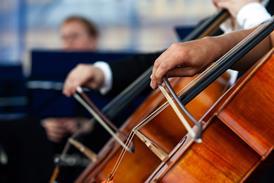






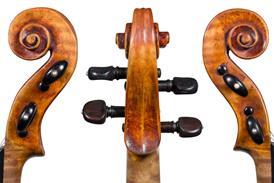
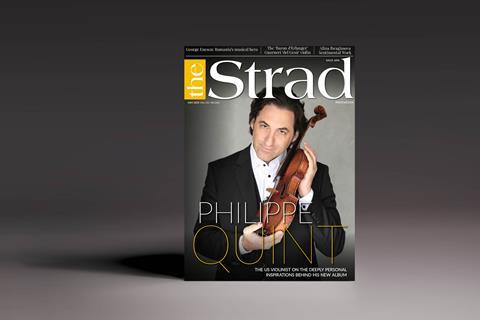









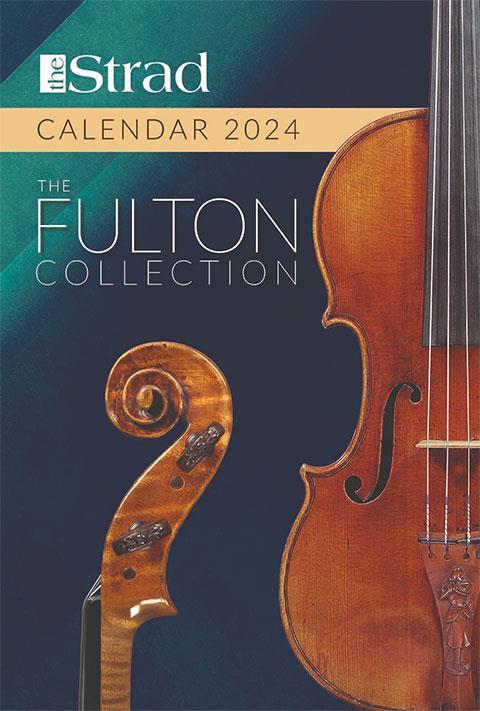












No comments yet